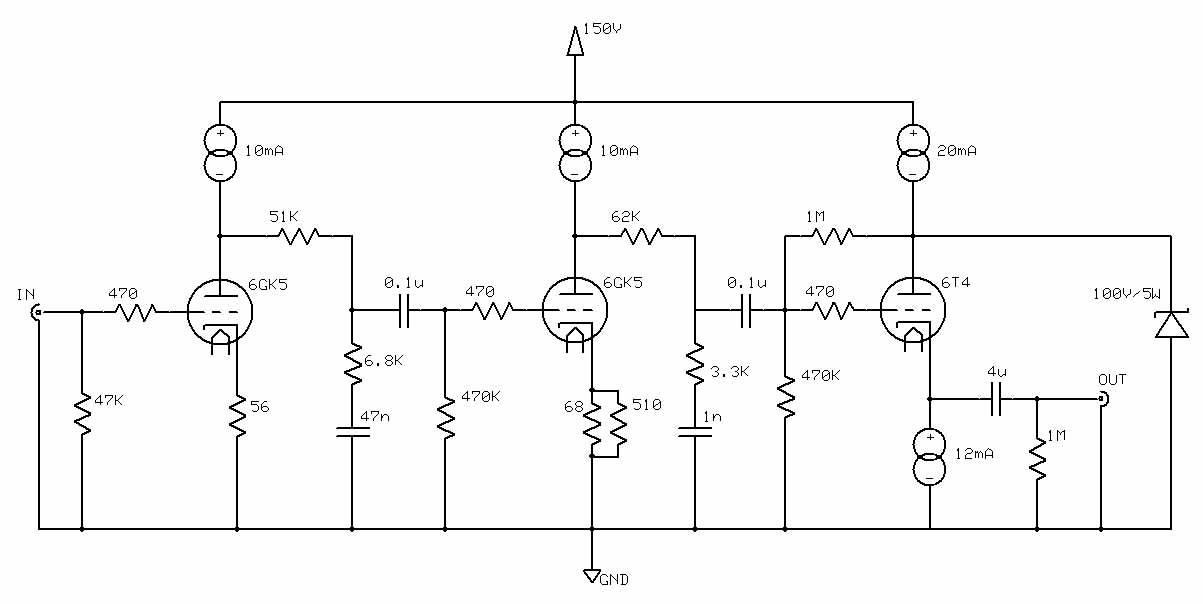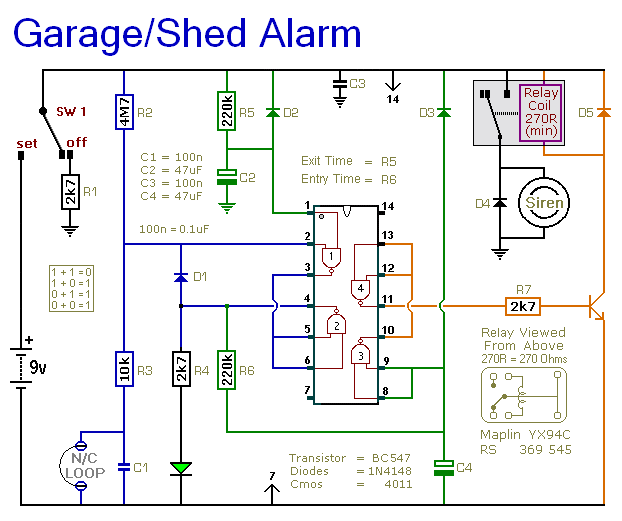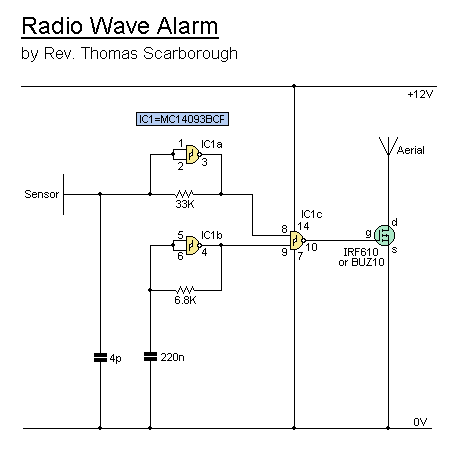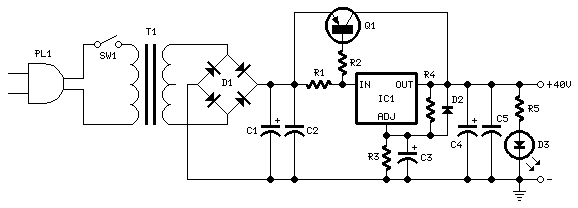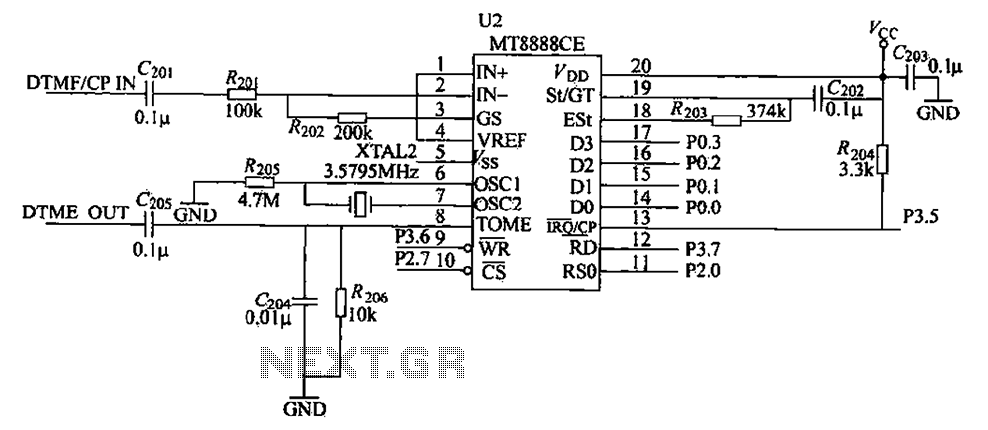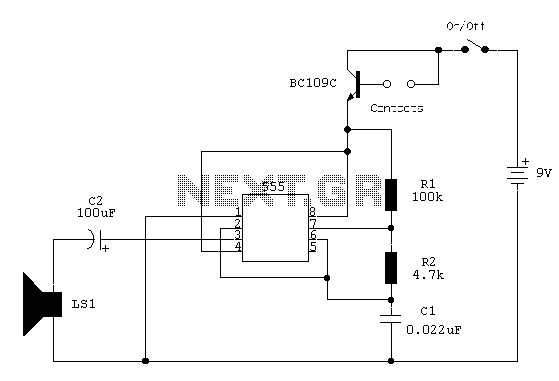
An SCR Based Burglar Alarm
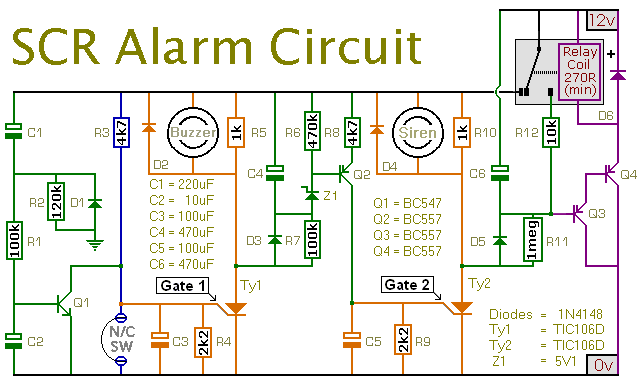
This is a simple SCR-based burglar alarm circuit. Its features include automatic exit and entry delays, along with a timed bell cut-off and reset. It is designed to be used with the usual types of normally-closed input devices such as magnetic reed contacts, micro switches, foil tape, and PIRs. The basic alarm has a single zone with exit and entry delays, which will be adequate in many situations. However, larger buildings are better divided into zones. The modular design means that any number of zones can be added to the system. These "instant" zones may be triggered by normally-open as well as normally-closed input devices. It is easy to use; when the alarm is switched on, there is about 30 seconds to leave the building. Upon returning and opening the door, the buzzer will sound, providing another 30 seconds to switch off the alarm. If the alarm is not deactivated, the siren will sound. After about 10 minutes, the alarm will attempt to reset itself. If the trigger circuit has been restored, the attempt will be successful. However, if the loop remains open, the attempt will fail, and the alarm will reactivate. The siren can be turned off at any time by switching off the alarm. A conventional bell uses up to about 400 mA, while an electronic siren generally uses less. If a higher current is drawn from either the buzzer or siren terminals, the SCR must be bolted to a metal heatsink, and the relay contacts may need upgrading.
The SCR-based burglar alarm circuit operates on the principle of controlling the flow of electrical current through silicon-controlled rectifiers (SCRs), which serve as the primary switching elements in the system. The circuit is designed to be user-friendly, incorporating automatic exit and entry delays that allow users to leave and re-enter the premises without triggering the alarm. The exit delay period, typically set to 30 seconds, provides ample time for users to exit the building after activating the alarm.
The alarm system can be configured with multiple zones, enhancing its applicability in larger buildings. Each zone can be equipped with various types of input devices, including magnetic reed contacts and passive infrared sensors (PIRs), which are effective in detecting unauthorized access. The modular design allows for easy expansion, enabling additional zones to be integrated into the system without significant modifications.
Upon returning to the premises, the alarm will sound a buzzer if the entry door is opened, signaling the need to deactivate the alarm within the set time frame. If the user fails to deactivate the alarm, the system escalates to a siren alert, which is a more intense warning indicating a potential security breach. The siren will sound for a predetermined duration, typically around 10 minutes, after which the system attempts to reset itself. This self-resetting feature is crucial for maintaining the functionality of the alarm system, as it ensures that the alarm can return to a standby state if the triggering condition is resolved.
For applications requiring higher power outputs, such as conventional bells or electronic sirens, careful attention must be given to the current ratings of the components involved. The SCR must be mounted on a suitable heatsink to dissipate excess heat generated during operation, and the relay contacts should be rated appropriately to handle the increased load. This design consideration is essential for ensuring the reliability and longevity of the alarm system under various operational conditions. Overall, the SCR-based burglar alarm circuit provides a versatile and efficient solution for enhancing security in residential and commercial settings.This is a simple SCR based burglar alarm circuit. Its features include automatic Exit and Entry delays - together with a timed Bell cut-off and Reset. It`s designed to be used with the usual types of normally-closed input devices such as - magnetic-reed contacts - micro switches - foil tape - and PIRs. The basic alarm has a single zone with "Exit/ Entry" delays. This will be adequate in many situations. However - larger buildings are better divided into zones. The modular design means that you can Add Any Number Of Zones to the system. These "Instant" zones may be triggered by normally-open as well as normally-closed input devices. It`s easy to use. When you switch on the alarm - you have about 30 seconds to leave the building. When you return and open the door - the Buzzer will sound. You have about 30 seconds to switch off the alarm. If you fail to do so - the Siren will sound. After about 10 minutes - the alarm will attempt to reset itself. If the trigger circuit has been restored - the attempt will be successful. But - if the loop is still open - the attempt will fail - and the alarm will re-activate. Of course - you can turn the Siren off at any time by switching off the alarm. A conventional bell uses up to about 400ma. An electronic siren generally uses less. If you intend to draw a heavier current from either the Buzzer or Siren terminals - the SCR in question will need to be bolted to a metal heatsink - and the relay contacts may need upgrading. 🔗 External reference
The SCR-based burglar alarm circuit operates on the principle of controlling the flow of electrical current through silicon-controlled rectifiers (SCRs), which serve as the primary switching elements in the system. The circuit is designed to be user-friendly, incorporating automatic exit and entry delays that allow users to leave and re-enter the premises without triggering the alarm. The exit delay period, typically set to 30 seconds, provides ample time for users to exit the building after activating the alarm.
The alarm system can be configured with multiple zones, enhancing its applicability in larger buildings. Each zone can be equipped with various types of input devices, including magnetic reed contacts and passive infrared sensors (PIRs), which are effective in detecting unauthorized access. The modular design allows for easy expansion, enabling additional zones to be integrated into the system without significant modifications.
Upon returning to the premises, the alarm will sound a buzzer if the entry door is opened, signaling the need to deactivate the alarm within the set time frame. If the user fails to deactivate the alarm, the system escalates to a siren alert, which is a more intense warning indicating a potential security breach. The siren will sound for a predetermined duration, typically around 10 minutes, after which the system attempts to reset itself. This self-resetting feature is crucial for maintaining the functionality of the alarm system, as it ensures that the alarm can return to a standby state if the triggering condition is resolved.
For applications requiring higher power outputs, such as conventional bells or electronic sirens, careful attention must be given to the current ratings of the components involved. The SCR must be mounted on a suitable heatsink to dissipate excess heat generated during operation, and the relay contacts should be rated appropriately to handle the increased load. This design consideration is essential for ensuring the reliability and longevity of the alarm system under various operational conditions. Overall, the SCR-based burglar alarm circuit provides a versatile and efficient solution for enhancing security in residential and commercial settings.This is a simple SCR based burglar alarm circuit. Its features include automatic Exit and Entry delays - together with a timed Bell cut-off and Reset. It`s designed to be used with the usual types of normally-closed input devices such as - magnetic-reed contacts - micro switches - foil tape - and PIRs. The basic alarm has a single zone with "Exit/ Entry" delays. This will be adequate in many situations. However - larger buildings are better divided into zones. The modular design means that you can Add Any Number Of Zones to the system. These "Instant" zones may be triggered by normally-open as well as normally-closed input devices. It`s easy to use. When you switch on the alarm - you have about 30 seconds to leave the building. When you return and open the door - the Buzzer will sound. You have about 30 seconds to switch off the alarm. If you fail to do so - the Siren will sound. After about 10 minutes - the alarm will attempt to reset itself. If the trigger circuit has been restored - the attempt will be successful. But - if the loop is still open - the attempt will fail - and the alarm will re-activate. Of course - you can turn the Siren off at any time by switching off the alarm. A conventional bell uses up to about 400ma. An electronic siren generally uses less. If you intend to draw a heavier current from either the Buzzer or Siren terminals - the SCR in question will need to be bolted to a metal heatsink - and the relay contacts may need upgrading. 🔗 External reference
